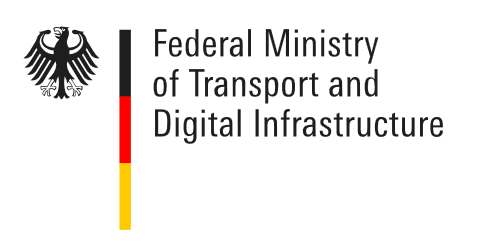
5 Years of openmod – Conference Materials online
23. January 2020
Off-Grid Renewable Energy opens up pathways for Electricity Access and Climate Action
29. January 2020Study: Nationwide demand for charging infrastructure for e-vehicles until 2030

In the study "Charging infrastructure after 2025/2030 – scenarios for the market ramp-up", the nationwide demand for charging infrastructure, distributed over different performance classes, was determined. For this purpose, seven typical charging situations were identified (charge use cases), which cover both private charging at home and at work as well as charging in publicly accessible areas. For the first time, a "delay factor" was determined which made it possible to take into account the stagnant development of private charging infrastructure when planning public charging points.
New approach for the calculation of the charging demand
In order to forecast the demand for charging points for e-vehicles, a top-down approach is currently usually followed. This means that for each e-vehicle, there must also be a predefined number of charging points – but this number varies depending on the source. In this study, a bottom-up approach was used as an alternative. Instead of the number of vehicles, this approach determines the number of actual charging operations required in Germany and calculates the required charging points on this basis.
Forecast for the construction of private chargepoints must be changed
Basically, the following applies: Energy which is used at one charge use case does not have to be used at another charge use case. For example, vehicles that have been fully charged at home overnight do not have to be included in the demand planning for the day in the city centre – even if there are many e-vehicles on the road in the city during the day. If there are many private charging options available, the pressure to set up charging points in public spaces decreases. The prediction of how many private charging points will be available and when, must therefore be as precise as possible. In order to determine the availability of private charging infrastructure up to the year 2030, this study determined for the first time a "delay factor" which takes into account current hurdles in the development of private charging infrastructure as well as delayed development and made the calculation more precise.
Involvement of all those involved
To ensure that all relevant developments were taken into account in the study, a regular exchange with stakeholders was a fixed component. Multi-stakeholder dialogs were hold from the end of January to the end of February to provide information on user preferences, the assumptions of the study, existing expansion plans, possible obstacles to the expansion of charging infrastructure, and the market ramp-up of e-vehicles by 2030. In the ”Masterplan for Charging Infrastructure” of the Federal Ministry of Transport and Digital Infrastructure (BMVI), it was stated that the cooperation with the automotive industry as well as the energy industry will be significantly deepened in this study.
Project duration: August 2019 to summer 2020
New approach for the calculation of the charging demand
In order to forecast the demand for charging points for e-vehicles, a top-down approach is currently usually followed. This means that for each e-vehicle, there must also be a predefined number of charging points – but this number varies depending on the source. In this study, a bottom-up approach was used as an alternative. Instead of the number of vehicles, this approach determines the number of actual charging operations required in Germany and calculates the required charging points on this basis.
Forecast for the construction of private chargepoints must be changed
Basically, the following applies: Energy which is used at one charge use case does not have to be used at another charge use case. For example, vehicles that have been fully charged at home overnight do not have to be included in the demand planning for the day in the city centre – even if there are many e-vehicles on the road in the city during the day. If there are many private charging options available, the pressure to set up charging points in public spaces decreases. The prediction of how many private charging points will be available and when, must therefore be as precise as possible. In order to determine the availability of private charging infrastructure up to the year 2030, this study determined for the first time a "delay factor" which takes into account current hurdles in the development of private charging infrastructure as well as delayed development and made the calculation more precise.
Involvement of all those involved
To ensure that all relevant developments were taken into account in the study, a regular exchange with stakeholders was a fixed component. Multi-stakeholder dialogs were hold from the end of January to the end of February to provide information on user preferences, the assumptions of the study, existing expansion plans, possible obstacles to the expansion of charging infrastructure, and the market ramp-up of e-vehicles by 2030. In the ”Masterplan for Charging Infrastructure” of the Federal Ministry of Transport and Digital Infrastructure (BMVI), it was stated that the cooperation with the automotive industry as well as the energy industry will be significantly deepened in this study.
Project duration: August 2019 to summer 2020
Consulting and implementation:
- Change of the methodology from the top-down approach to the bottom-up approach
- Evaluation of the BMVI study Mobility in Germany (MiD 2017) and application of a bottom-up analysis
- Development of a ranking for the attractiveness of charge use cases depending on the household type (cascade of use)
- Consideration of the utilization of charging points of different performance classes
- Development of an update methodology and a parameterizable calculation basis
- Creation of extreme scenarios to determine interactions and effects of the “communicating tubes”
- Implementation of stakeholder workshops on the topics of charging @home, @work, and @public
- In-depth discussions with the automotive and energy industries
The studie's findings:
- The number of e-vehicles may increase even more by 2030 than currently assumed – this is shown by the confidential data provided by the car manufacturers surveyed. Up to 14.8 million battery electric e-vehicles and plug-in hybrids could be registered in Germany in 2030.
- The proportion of private charging processes is forecast to reach 76 to 88 percent by 2030, while the proportion of public charging processes will reach 12 to 24 percent. In 2030, a charging point may be available at around 61 percent of private parking spaces at home.
- Whether at work, while shopping or on vacation, every single charging situation is important. Away from private parking spaces, street space will play a key role. At the roadside and public parking lots, a demand for 420.000 charging points was determined.
- The demand for publicly accessible charging infrastructure in 2030 is between 440,000 and 843,000 charging points. The number depends on how much private charging infrastructure will be available and how busy this charging infrastructure is, but also on the charging behavior of the users.








